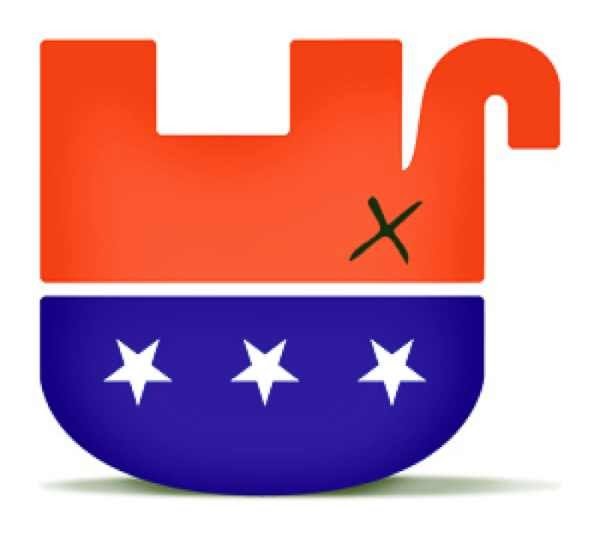Our national debt is over $34 trillion. Our credit card debt is, for the first time, over one trillion dollars.
“This week, the supervisors authorized $174 million in new debt for: refurbishing the south county jail ($20 million), improvements to Lake Cachuma ($7.5 million), a new probation dept headquarters ($55 million,) a fire station ($5.1 million,) and a regional fire communications center ($17.6 million), to name a few of the projects on its agenda. Unlike bond measures that require voter approval, the county now owes upwards of $400 million in loans that the supervisors authorized without a vote of the people.
Santa Barbara County “In the Red” for $1.7 billion
In addition to the $400 million in loans, Santa Barbara County owes some $800 million in unfunded pension liabilities. Moreover, the county continues to fall behind in maintaining the roads, bridges, and parks that it owns. The total price tag to tackle deferred maintenance is estimated to be $527 million. Altogether, counting the loans, pension liabilities, and deferred maintenance, county supervisors are in the red to the tune of $1.7 billion.”
Neither the Feds or Sacramento can afford to bail them out. Santa Barbara, via debt, is entering the Doom Loop. Watch as it collapses like San Fran and L.A. This is a suicide, not a murder.
America is Now a Debtor Nation
by Andy Caldwell, Santa Barbara Current, 3/24/24 https://www.sbcurrent.com/p/america-is-now-a-debtor-nation?utm_source=post-email-title&publication_id=2074654&post_id=142847151&utm_campaign=email-post-title&isFreemail=true&r=x9o3&triedRedirect=true&utm_medium=email
The United States of America is in a financial debt spiral, and it may be too late to recover. The amount of debt being carried by both individuals and at every level of government is staggering.
Santa Barbara County borrows large sums of money regularly that must be repaid by either ratepayers or taxpayers. These loans are typically created by a debt instrument known as a Certificate of Participation, by which the county leverages an asset it owns to qualify for the loan. The largest project – the county’s waste-to-energy resource center – cost upwards of $250 million (with interest), and it is not working. Santa Barbara County borrows large sums of money regularly that must be repaid by either ratepayers or taxpayers. These loans are typically created by a debt instrument known as a Certificate of Participation, by which the county leverages an asset it owns to qualify for the loan. The largest project – the county’s waste-to-energy resource center – cost upwards of $250 million (with interest), and it is not working.
This week, the supervisors authorized $174 million in new debt for: refurbishing the south county jail ($20 million), improvements to Lake Cachuma ($7.5 million), a new probation dept headquarters ($55 million,) a fire station ($5.1 million,) and a regional fire communications center ($17.6 million), to name a few of the projects on its agenda. Unlike bond measures that require voter approval, the county now owes upwards of $400 million in loans that the supervisors authorized without a vote of the people.
Santa Barbara County “In the Red” for $1.7 billion
In addition to the $400 million in loans, Santa Barbara County owes some $800 million in unfunded pension liabilities. Moreover, the county continues to fall behind in maintaining the roads, bridges, and parks that it owns. The total price tag to tackle deferred maintenance is estimated to be $527 million. Altogether, counting the loans, pension liabilities, and deferred maintenance, county supervisors are in the red to the tune of $1.7 billion.
The primary source of county revenues to help pay for the above is local property taxes. Yet, the county is sabotaging this revenue stream in multiple ways. One of the dumbest? By buying up properties to house the homeless, such as the old sorority house in IV, which takes those properties off the tax rolls. Or, as Supervisor Laura Capps wants to do, allow county property to be used for the construction of affordable housing.
These housing projects too would pay no taxes.
Another thing the county does is deter future development by exacting exorbitant fees on new development. The worst of these costs are called traffic mitigation fees, which are charged to accumulate funds for road improvements and congestion relief.
For instance, if somebody wants to build a 2,000 sq ft 7-Eleven in the unincorporated area near Goleta, the traffic mitigation fee would be $974,202.
A 3,000 sq ft bank with a drive thru? $2,428,692.
A 50,000 sq ft shopping center? $5,240,000.
Note to those politicians who would like to raise taxes to help make ends meet: we the people can’t afford it!Consider the fact that the New York Federal Reserve found that total household debt stands at $17 trillion.Credit card balances alone total well over $1 trillion.
California state and local government debt is nearly $2 trillion. This includes $145 billion in bonds that must be paid off along with local government debt at $361 billion. Unfunded health benefits to retirees add another$184 billion, along with nearly $1 trillion in state government unfunded pension liabilities. Finally, there is the low-ball estimate of some $60 billion needed to finance an accumulation of unfunded maintenance forroads, highways, and freeways
The U.S. National Debt is heading to $35 trillion… and beyond. This past year, interest on the debt came to$659 billion. No economy in the history of the world has survived this level of national debt as measured by the debt/gross domestic production ratio.
What to do? We must drastically reduce waste, fraud and abuse, and the size of the federal government, along with its bad habit of printing money when it runs out of funds. We could start with Senator Rand Paul’s “Festivus” Report on federal government over-spending, which identified some $900 billion in waste.
Nine hundred billion is “not much,” but it is a start!



